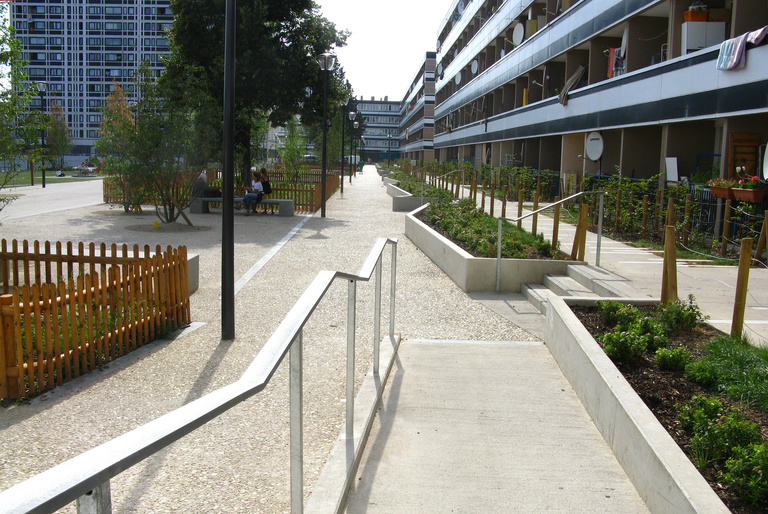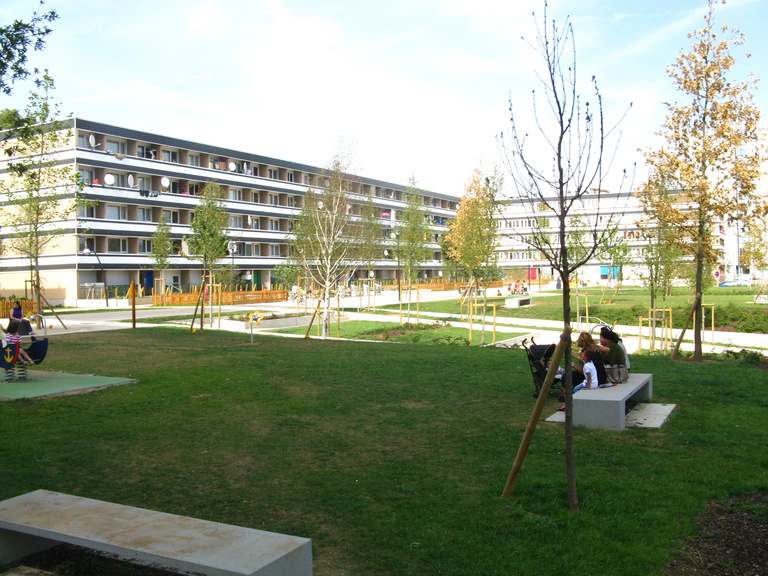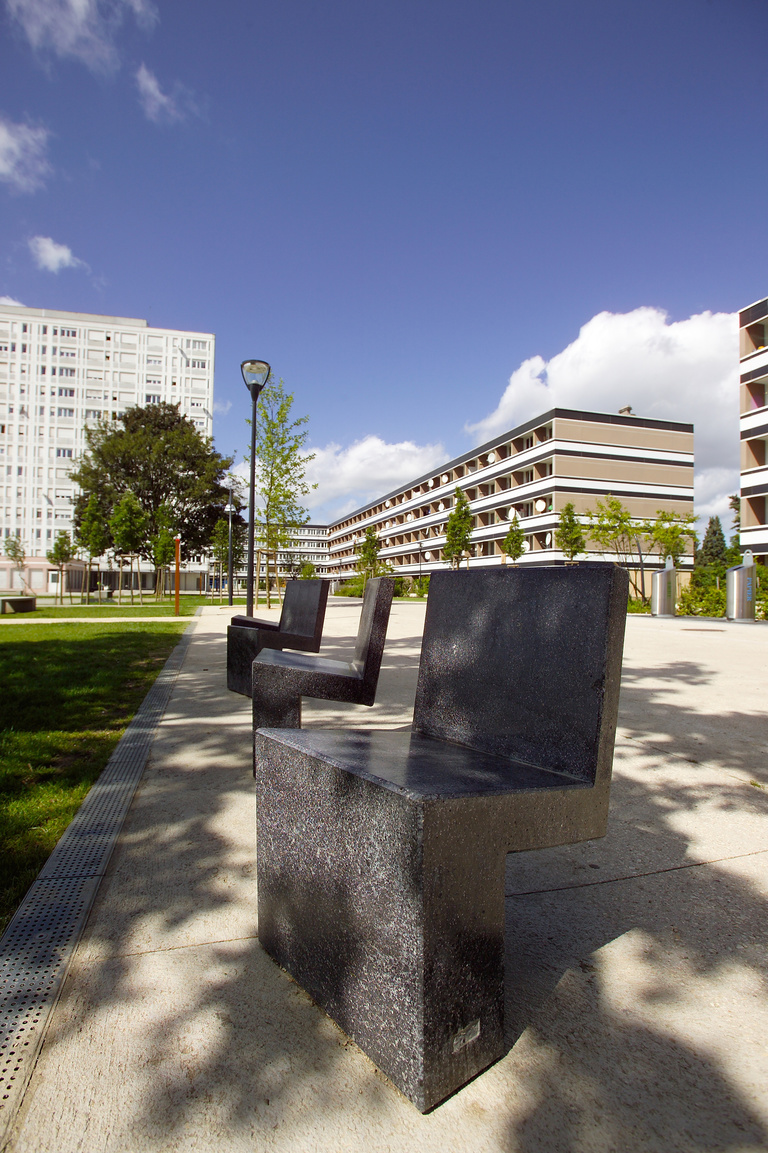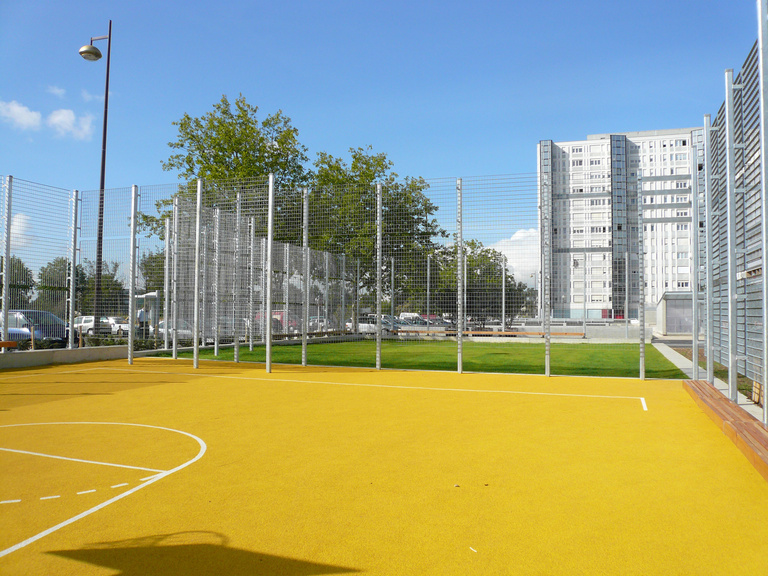Metz-Borny is a district made up of large buildings dating from the 1960s which today requires restructuring to take into account issues of population, the socio-economic situation and the nature of the spaces.
The project is divided into three objectives: demolition, heritage enhancement and implementation of a development process.
Demolition is a necessary first stage. It will affect 800 housing units clearly identified as being an obstacle to any new development. It will amount to a surgical operation affecting approximately 5 hectares in a territory that covers 200 ha. It is grounded in a reality: a rapid increase in vacancies in housing units that have become impossible to rent.
The heritage enhancement concerns the architecture of Jean Dubuisson, exemplary for more than one reason, but which suffers from the monolithic nature of the district. In this context, “residentialisation,” which tends to create identifiable care and management units, can take place without compromising the urban and architectural unity of this residential ensemble.
The development process affects all aspects of the quality of life: improved road access, reconstruction of schools, multifunctionality, implementation of a green plan, creation of new housing. It also affects the temporalities of the reconstruction, which affects the built environment but also the social structure of the neighbourhood. That is what orients three platforms, keyed to socio-economic life, urban ecology and sport. These experimental places, equipped with ephemeral structures, are intended to accompany the current generation of adolescents over a duration of fifteen to twenty years. That is the time frame within which the relation between social and spatial concerns will be taken into consideration, with no pretension of “finishing” the district at this point.














